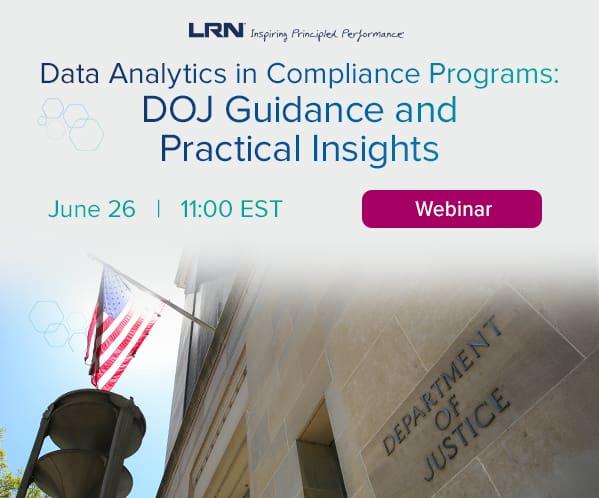Ask 10 risk managers to give you a definition of risk or risk management and you will get a variety of responses describing a range of theories, a variety of frameworks from the simple to complex or detailed action steps one must take to deliver an effective program.
What you won’t get is a consensus or absolute agreement on what risk is or how best to manage it. Humans have dealt with risk for millennia, but unlike the laws of physics, risk is personal and experienced differently by everyone. This is exactly why we can’t agree on what risk is or how best to manage the diversity of risks each of us deals with in our business or daily lives.
The challenge we face is that risk and the practice of risk management is seldom addressed on a three-dimensional level. The vast majority of risk management programs have achieved some level of success on what I call the first and second dimensions of risk. Yet to achieve sustainable success, risk managers must add a third dimension to their risk programs. What are the three dimensions of risk and why is it so hard to master a three-dimensional risk program?
First Dimension of Risk
Without much exception, risk professionals start with an assessment of risk. These risk assessments are derived from either a qualitative or quantitative analysis that helps inform the organization of the threats to achieving its goals. Therefore, data — or the information derived from producing data about the risks facing an organization — is the first dimension of risk.
Some organizations have robust systems in place to capture and analyze an increasingly large and complex set of data about the risks in their firm. Many call such a database a risk registry, loss database or some other proprietary term used to denote the warehouse of stored information.
Since I have already noted that some level of success has been achieved at this level of risk management, I will not spend more time discussing the merits or challenges of building the first dimension of risk. Those who have spent time developing their programs are well aware of the time and resources spent to achieve even a modicum of success, however you define it. For those who have not the time or resources to develop this first step in the three dimensions of risk, there are alternative ways to get started.
What I will say is that, in general, the process of capturing and analyzing data is imperfect; therefore, some level of professional skepticism must be exercised when forming an opinion or coming to a conclusion about the information produced in this phase of your program.
Suffice it to say that the probability distribution of outcomes of any risky event takes time to develop and any point in time observation is made with incomplete information.
Second Dimension of Risk
The second dimension of risk is the process of deciding what actions to take or avoid based on the findings in the first phase. Many risk professionals call this process risk mitigation and some have come up with very sophisticated ways to minimize the impact a risk event has on their organization. Again, there are too many diverse examples of how this has been achieved, but I am sure you have examples of success stories describing an operational or technical challenge you have overcome.
As mentioned earlier, given that the first dimension of risk is imperfect, we are left with what many call residual risks. These residual risks are created because we either need more precise information or lack the ability to fully address these risks because of time, resources or know-how. Residual risks are also called “uncertainty” and represent lost opportunity or threats to an organization if left dormant without some plan to better understand them over time.
Organizations use a variety of programs including Six Sigma, Lean Management or other processes to address the risks and inefficiencies discovered during this phase of their risk management program. Again, it becomes obvious that a great many resources are expended putting programs in place to address this second dimension of risk for those firms that have made it this far.
Yet something is still missing! Given all of the time, resources and effort spent, many organizations still lack confidence in their risk programs. Regulatory fines, organizational missteps and technical failures litter the news daily because of this missing component, the third dimension.
Third Dimension of Risk
The third dimension of risk requires the least amount of investment and has the ability to actually achieve a return on investment many times greater than the costs expended in dimensions one and two. Before I tell you what the third dimension of risk is, let me describe what it “feels” like to operate at this level of risk management.
Firms that have begun to operate on a three-dimensional level of risk have incorporated what they know about dimensions one and two and have empowered front-line management to address their risks and reward quantifiable outcomes in operational efficiency, safety and reductions in impacts to organizational objectives. Divisional budgets would also include risk reduction line items and earmarks for understanding residual risks not yet addressed.
Three-dimensional firms have strategically aligned front-office goals and objectives with middle- and back-office capability. Three-dimensional strategic alignment means that high standards of performance are set and expected based on ethical execution of these objectives and in partnership with respective support functions. These firms are constantly calibrating the speed at which they operate, taking appropriate risks along the way.
What is the third dimension of risk? Decision-making under uncertain conditions, or sometimes called Behavior Systems. Recent research suggests that 95 percent of risk failures occur because of bad behavior or poorly informed decision making. This fact suggests that even the most successful risk management programs are spending 90 percent or more of their resources on 5 percent of the problem. The other 10 percent is spent on remediation after a risk failure has occurred. And little to no resources are spent on Behavior Systems.
We live in a three-dimensional world, yet many risk programs have not fully integrated the important role each person plays in managing their own individual risks. Risk is a personal experience that requires management in real time, not just during a periodic assessment in time.
The third dimension of risk is ignored because most firms erroneously assume that there is little that can be done about the behavior or decision making of its employees or rogue senior management.
While no firm can afford to micromanage the decision making of every employee, all firms can think about how to help their employees make the right decisions.
Three-dimensional firms make thoughtful investments in smart systems that anticipate behavior. These systems include compensation schemes, sales incentives, bonuses and merit rewards and other forms of recognition, as well as appropriate reprimands for bad behavior. Smart systems go well beyond compensation and rewards and include technology barriers, how departments collaborate, hiring practices, skills development and other holistic approaches.
Additionally, everyone is encouraged to solve problems at their level of the organization, including the most challenging problem of management execution.
The missing link in most organizations is the assumption that one group is responsible for risk management. Three-dimensional firms understand that risk is shared across the firm and success depends on the behavior of the entire organization.
Changing and/or challenging corporate culture maybe the hardest part of reaching the third dimension of risk management, but it may be the most rewarding with sustainable long-term outcomes.



 James Bone’s career has spanned 29 years of management, financial services and regulatory compliance risk experience with Frito-Lay, Inc., Abbot Labs, Merrill Lynch, and Fidelity Investments. James founded Global Compliance Associates, LLC and TheGRCBlueBook in 2009 to consult with global professional services firms, private equity investors, and risk and compliance professionals seeking insights in governance, risk and compliance (“GRC”) leading practices and best in class vendors.
James is a frequent speaker at industry conferences and contributing writer for Compliance Week and Corporate Compliance Insights and serves as faculty presenter and independent consultant for several global consulting firms specializing in governance, risk and compliance, IT compliance and the GRC vendor market. James created TheGRCBlueBook.com to provide risk and compliance professionals with transparency into the GRC vendor marketplace by creating a forum for writing reviews on GRC products and sharing success stories on the risk practices that are most effective.
James is currently attending Harvard Extension School for a Master of Arts in Management with an emphasis in accounting and finance. James received an honorary PhD in Letters from Drury University in Springfield, Missouri and is a member of the Breech Business School Hall of Fame as well as the Missouri Sports Hall of Fame. Having graduated from the Boston University Graduate School of Education, James received his M.Ed. in Management and Organizational Design in 1997 and a Bachelor of Arts in Business Administration from Drury University in 1980.
James Bone’s career has spanned 29 years of management, financial services and regulatory compliance risk experience with Frito-Lay, Inc., Abbot Labs, Merrill Lynch, and Fidelity Investments. James founded Global Compliance Associates, LLC and TheGRCBlueBook in 2009 to consult with global professional services firms, private equity investors, and risk and compliance professionals seeking insights in governance, risk and compliance (“GRC”) leading practices and best in class vendors.
James is a frequent speaker at industry conferences and contributing writer for Compliance Week and Corporate Compliance Insights and serves as faculty presenter and independent consultant for several global consulting firms specializing in governance, risk and compliance, IT compliance and the GRC vendor market. James created TheGRCBlueBook.com to provide risk and compliance professionals with transparency into the GRC vendor marketplace by creating a forum for writing reviews on GRC products and sharing success stories on the risk practices that are most effective.
James is currently attending Harvard Extension School for a Master of Arts in Management with an emphasis in accounting and finance. James received an honorary PhD in Letters from Drury University in Springfield, Missouri and is a member of the Breech Business School Hall of Fame as well as the Missouri Sports Hall of Fame. Having graduated from the Boston University Graduate School of Education, James received his M.Ed. in Management and Organizational Design in 1997 and a Bachelor of Arts in Business Administration from Drury University in 1980.









